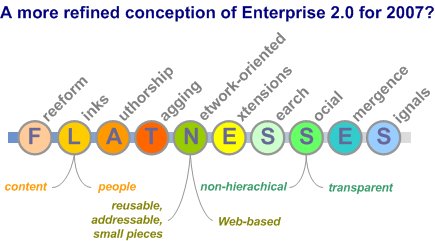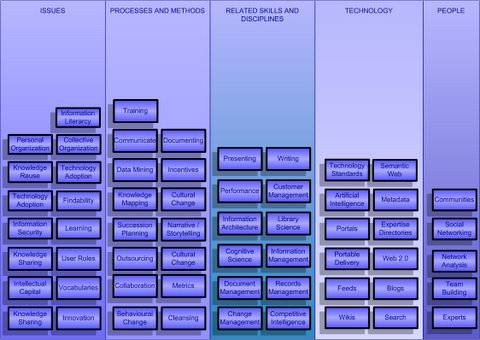Some notes (with added thoughts and remarks from me) on Sören Stamers and Nicole Duffts session at Web 2.0 Expo in Berlin, Sören starts:
Self-organization moves the world (emergence, natural enterprise, complex systems theory, …)
But hierarchy controls the enterprise – why?
Hierarchies are vastly successful (military, church, mafia, …), but
– they kill creativity (which thrives on the edge, see Stowe Boyd)
– they kill agility
and
– they kill motivation (people don’t like to be told what to do, at least the people we want to have in our organizations)
So what’s the situation?
1. Rising complexity
2. Accelerating dynamics (and yes, not only in this web 2.0 world, think of accelerating product lifecycles)
3. Stronger Values (networks tend to create a sense of value, they evolve into higher levels of understanding, again here’s the emergence of patterns)
Three years ago CoreMedia was sensing the need for new approaches, to let go, to get the best of their (capable) people. Here’s how they approached this, they let go the old understanding of departments and rigid organizational structure:
– Get rid of departments, work in projects (so it gets easier to include external people into the work processes
– Transparency doesn’t hurt (open board/management meetings, this creates trust)
– Using Open Space meetings as an organizational method
– Collective awareness beats processes (big changes get easy when you have a global, shared understanding)
– Tools, yes, tools are important (they change the behaviour of people, again see Stowe Boyd) and yes, those web 2.0 tools are a really good afterburner. Sören cites Twitter as an example, but also showed us screenshots of the internal CoreMedia blogging platform), CoreMedia seems to be an interesting company to work for or to do projects with …
Next up is Nicole Dufft of Berlecon Research (Berlin, Germany) speaking about Reality Check: Enterprise 2.0 in Germany
– recently had a study among CEOs et al.
– focussed on knowledge-intensive industries
Some findings:
– a quarter of decision makers in KM-intensive industries do not know what Web 2.0 is
– of those who know, only a smart part know what to do about it
– 90% sees there’s a change going on, that requirements have increased (they sense that things are shifting
– less than half see they are good supported by their ITC team (surprise …)
All in all, web 2.0 ideas haven’t arrived yet. Those who should don’t use the tools, while there’s some scattered use now and then, there’s pretty little use on a company scale.
And really important: People asked do not recognise the benefits of Enterprise 2.0 (yet, these will only be really visible when these tools get used in an integrated, enterprise scale way)
Some Learnings
– Integrated E 2.0 solutions will have to replace insular tools
– Enterprise 2.0 will change the way we companies collaborate, exchange knowledge and ideas
– We as consultants must work hard to explain the benefits, to show them the usage etc.
Closing there was a round of statements and questions from the audience, all things that are bothering them:
– projects not working as wished
– we’re working in small teams, but they seem to don’t work well together
– we’re suffering from bad motivation among our employees – they seem to be too content
– we sense that we could be more innovative, but don’t know how to proceed
– we are a big organization, how can we kill the hierarchy (Sören says that one way may be a meritocracy, someone from the audience: make flat project teams, you need to network and build these small teams, this is a good idea even for big enterprises)
– listening is sometimes the bottle-neck, it is easy to make them write blogposts, but it’s hard to listen and act upon the things read (Sören offers a good idea: support the formation of weak ties in the organization, e.g. by having rounds of bilateral talks in the organization, whereby you create conversations and change the organization in the course of talking)
This was a good session, I enjoyed the audience participation and the presenters way of going on about this, Frank and Oliver did some liveblogging too, so I will link to their posts shortly.

